Braces do more than give you straight teeth, a great smile, and boost your self-confidence. They can also make a big difference in the long-term quality of your oral health.
But even with a mostly-straight smile, there may be underlying issues that braces can help fix:
- Crooked teeth can cause chewing problems, which leads to digestive issues
- Crowded or misaligned teeth are hard to clean, causing bacteria to build up and turn into plaque, which can lead to enamel damage
- Any issue with the alignment of your teeth could be prohibiting your ability to speak clearly
If your orthodontist believes that your oral health can benefit from braces, you have two basic options: traditional braces (which include metal, ceramic, and a few other variations), or aligners like Invisalign.
Let’s look at the basic differences between braces and Invisalign, and compare the pros and cons of each.
The Pros and Cons of Traditional Braces
Traditional braces are exactly what you picture: Metal braces that are visible on the outside of your teeth. That metal is actually stainless steel, and each metal bracket is secured to each tooth with a type of mouth-friendly cement.
A wire runs through each bracket and applies pressure to your teeth, encouraging them to move into alignment slowly over time.
Pros:
The main pro of traditional metal braces is that they tend to be the most affordable option of all teeth-straightening alternatives.
They also are sometimes the best option for:
- Children and teens who may take off their clear aligners throughout the day. Aligners don’t work if you don’t wear them. You can’t take braces off!
- More extreme cases of misaligned teeth
Cons:
The cons of traditional metal braces is that they’re visible, can be harder to clean, and can sometimes be uncomfortable. Another potential con is the time they take to work — about two years.
But there are a few other styles of traditional braces to consider before the verdict is in on how they stack up to Invisalign.
Other Types of Traditional Braces
The following are all fundamentally the same as traditional metal braces, with a few features that distinguish each of them.
Damon braces
These self-litigating braces don’t use elastic bands to hold the wire in place. Instead, they rely on a sliding mechanism.
Pros:
Damon braces automatically adjust on their own, which makes for faster results. Plus, they’re easier to clean, less painful, and you don’t have to go to the orthodontist as often for check-ups.
Cons:
These types of braces tend to be a little more expensive than traditional metal braces.
Ceramic braces
Pros:
The main difference here is the color of the braces. Instead of stainless steel, they’re made of ceramic, which makes them less noticeable (the wires also come in tooth-matching colors).
Cons:
Some patients report discoloration of their teeth from the elastic bands, which don’t stay as clean as they do with stainless steel braces. But with a proper cleaning regimen, these are a safe alternative.
Lingual braces
These are exactly like traditional metal braces, except they’re mounted to the inner-facing surface of the teeth.
Pros:
The benefit of lingual braces is that they’re not visible from the outside.
Cons:
These can be more expensive and less comfortable than other types of braces, and more difficult to adjust. Plus, they don’t always work for more extreme cases.
How Much Do Traditional Braces Cost?
The average cost of traditional metal braces is what makes them an attractive option. They tend to be one of the more affordable alignment options on the market. Ceramic and damon braces cost a bit more, with lingual being the most expensive.
How Long Do Traditional Braces Take to Work?
Traditional braces generally take around 2 years to straighten teeth. Damon braces speed up the process significantly, cutting 6 months off that — that means they can work their magic in about 18 months.
The Pros and Cons of Invisalign
Invisalign is the household name for a category of teeth-straighteners called clear aligners. There are many brands of clear aligners on the market, but Invisalign is the industry leader, which is why they are our go-to at Premier Orthodontics.
Clear aligners are made of a flexible plastic that is safe for teeth and your mouth. The plastic is shaped into a clear mold, which fits over your teeth. Each pair of Invisalign is custom-designed specifically for your teeth and your oral hygiene needs.
Invisalign clear aligners are a good treatment option for adults, teens, and any children with fully grown-in teeth.
The pros of Invisalign are many:
- They’re practically invisible to others
- You take them off when you eat or drink, and when you brush and floss your teeth, which makes for a very easy cleaning regimen
- Much more comfortable than traditional braces
- Work faster than traditional braces — the average Invisalign treatment is 12 to 18 months
With a list of pros like that, there must be a catch, right? That brings us to the price.
How Much Does Invisalign Cost?
Invisalign is usually more expensive than most traditional braces, costing up to twice as much as traditional braces.
But since Premier Orthodontics is a Top 1% Elite Invisalign provider, we can offer them to our patients for the same cost as traditional braces. In some cases, our Invisalign prices are even more affordable than traditional braces!
How Long Does Invisalign Take to Work?
The average treatment time for Invisalign is 12 to 18 months. That’s 6 to 12 months shorter than most traditional braces treatments.
Most Invisalign patients start seeing results within just a few months, so they can start enjoying the benefits of straighter teeth sooner.
Clear aligners only work when they’re being worn, so if you think your child or teen will be tempted to take them off when you’re not looking, they may not be the right option.
Which is Right for You? Traditional Braces or Invisalign?
There are a lot of factors to consider when choosing an appropriate orthodontic treatment. Let’s sum up what we’ve learned about traditional braces vs. Invisalign to help make the decision clearer.
Every smile is a bit different. Consult with your orthodontist before deciding which treatment is the best for you.
All of our offices are now reopen for non-emergency patients!
If you feel more comfortable at home, you can use our virtual consultation tool right now to start planning whether Invisalign or braces are right for you.

